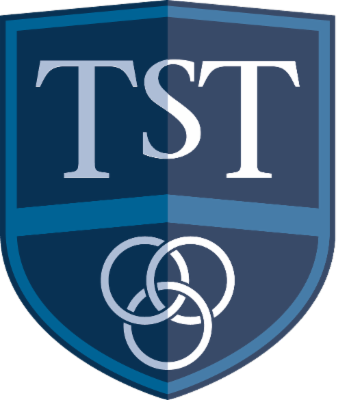Engagement is a key factor in any student’s success from their first lesson in Kindergarten through the culminating project of every post graduate degree. Anyone who has taught for any period of time has faced some version of the question “why do I have to do this?” or “is this for a grade?” These questions ultimately speak to how engaging students find their work to be. For many students, earning a good grade is enough motivation to stay engaged in their learning, but why do so many students have to push themselves to stay engaged when so much of the world outside of school is driven by meaningful work? And why is it true that a student who simply cannot sit still at school is capable of sitting motionless in front of their PS4, Xbox, or Nintendo Switch for hours as soon as they are home?
Video games are driven by quests that are clearly defined, and new powers are spread throughout the levels so that the players are frequently rewarded for their work. Despite the negative press that is so pervasive whenever video games are mentioned, they have many benefits. As a fan of video games, I can easily explain why I do not give up when I fail to complete a quest. I collaborate with other players to complete difficult quests or seek out more knowledgeable players to ask for advice. The game provides immediate feedback based on my performance, I am able to reflect on my choices based on that feedback before continuing, and I am constantly using situational knowledge to make choices that have real consequences. All of this equals a huge amount of engagement. So why not bring these elements into the classroom and leverage the elements of these games to benefit student learning?
Classroom gamification can be defined simply as taking some of the core principles from games and applying them to non-gaming situations—in this case the classroom. This might look like repurposing an old board game so that students solve math problems before moving rolling a die to move their token, or rewriting the questions for Trivial Pursuit so that students choose to answer a question from their science, history, or math curriculum. It can even be as simple as teaching vocabulary words using the game Memory where students turn over two face down cards and keep a matched pair of vocabulary word and definition.
As classroom technology becomes ever more present, companies like Classcraft have started creating software aimed at fostering classroom gamification. This software functions very much like a video game designed for use specifically in the classroom. Once students are added to a teacher’s class, they create a character with a variety of skills, earn experience points for completing quests (often assignments designed around the curriculum), earn gold points used to buy items in the game, and fight bosses. These bosses are designed to be a quick check to determine how well students are understanding the content being taught, but rather than looking like another worksheet or classroom assignment, they are working as a team to defeat a common enemy. This fight is designed to feel just like the boss fight in any cooperative video game, from possibly missing an attack even when you solve a problem correctly to scoring a critical hit after that correct solution.
Classroom escape rooms, like those found through Breakout EDU, are another example of classroom gamification. Typically these lessons last an hour, much like an escape room you might visit in person, but serve as either an introduction to a new unit or as a review activity. The pressure is on as soon as the clock begins to tick down from 60 minutes, and students work together to determine which challenges best fit their strengths. The escape room format fits any content area, and by mixing in a variety of puzzles, each experience is different from the last. In addition to covering some of the classroom curriculum, students are challenged to think creatively to solve the puzzles presented and often have to share their ideas with other students in the class before someone finally understands how to put it all together. The critical thinking and problem solving present in the escape room experience pushes students to think at the highest levels to escape before their time is up!
Not all elements of classroom gamification have to be so completely immersive though. Websites like Kahoot! allow the teacher to write multiple choice questions and students race to see who can answer correctly the fastest. They earn points for each correct answer, and more points if they answer faster than their classmates. Before each new question is presented, a leader board is posted to show where each student stands in the competition. The music that plays in the background of a Kahoot! quiz is so easily recognizable that I have had students race into class after hearing it from the hallway. I cannot think of a better sign students are engaged in the lesson than to see them race into the room knowing a quiz awaits.
A slightly different quiz game that students ask for frequently is Plickers. This Website app combination requires a game card to play. Each student is able to hold his or her unique game card up to answer a, b, c, or d. Because the cards are unique for each student, other students cannot tell how others are responding. The teacher then scans the classroom with the camera of his or her smartphone, and the app quickly reads each student’s answer. A graph is then created to show how many students selected each answer choice, as well as the correct answer, but does not indicate which students were correct and which were incorrect. Again, I have students actually ask when we will play Plickers again. In essence, this is a quick five question quiz I use to determine how well my class (and individual students through the teacher login) understand the content being taught leading up to a test. I cannot imagine many students actively asking to take another quiz, but the added element of raising a card, seeing their name checked off on the screen when I scan their answer, and the reward of knowing they answered correctly without having to worry the rest of the class knows they got it wrong makes this quiz so much fun students ask for it.
Ultimately, classroom gamification is aimed at ensuring students successfully master the content presented throughout the year. Gamification is nothing more than a strategy that can be implemented to support students in their learning. Much like sound classroom management, personal relationships with students, and clear instruction, gamification does not actually teach math, reading, history, or science; gamification encourages students to remain engaged and to maximize their potential. If I can do something that makes students want to come back into the classroom to do the next lesson, I feel confident they are ready to learn. Long division might not be an exciting topic on its own; however, when I create a series of quests where students are only successful after solving a set of division problems, they engage in learning the new math processes as a means of completing these quests.
Gamification takes familiar elements of board games or video games and applies them to the work students are expected to complete during class anyway. By rewarding positive behavior, effort, group work, or any range of desired outcomes, students are motivated to meet the set expectations. Quizzes that feel more like a game provide essential practice and data to the teacher, but the interactive nature of a Kahoot! quiz leaves students feeling like they got to play a game rather than take a quiz. And when students want to work in the classroom, I feel they are more likely to master their new learning.
Evan Carpenter
5th Grade Teacher

 Login
Login








